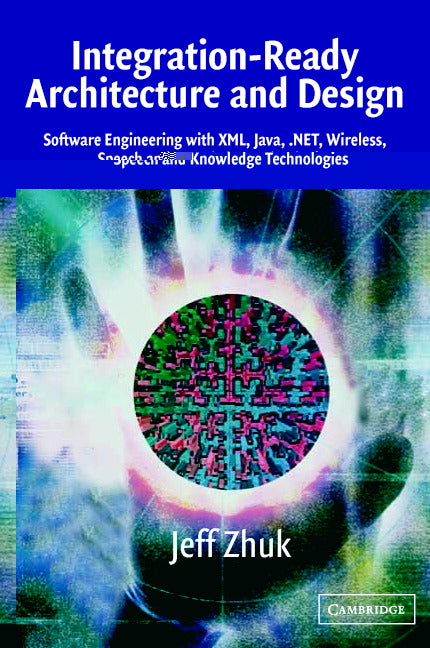Freshly Printed - allow 4 days lead
Couldn't load pickup availability
Integration-Ready Architecture and Design
Software Engineering with XML, Java, .NET, Wireless, Speech, and Knowledge Technologies
Discussion of building presentation factories and seamless integration of technologies that provide access to corporate data and services.
Jeff Zhuk (Author)
9780521525831, Cambridge University Press
Paperback, published 26 July 2004
640 pages, 50 b/w illus.
23.5 x 17.8 x 3.4 cm, 1.019 kg
'The book is a brilliant synergy of theory and experience. Filled with fundamental concepts together with innovative and yet very practical approaches to modern software engineering, it answers the most important questions of today and allows us to look into the future.' A. Nozik, General Director, Specialized Engineering, Integration, and Automation Company, SZMA
What would you do if your IT job was no longer performed in your country? Your survival does not lie in limiting global collaborative engineering. IT workers will survive and prosper because of their ability to innovate, to quickly learn and change directions, and to evolve from Information Technology into Distributed Knowledge Marketplace. You have no choice but to be pro-active, learn to stay current, even run ahead of the game. Integration-Ready Architecture and Design bridges the gap for a new generation of wired and wireless software technologies and teaches a set of skills that are demanded by fast moving software evolution. This up-to-date textbook integrates theory and practice, going from foundations and concepts to specific applications. Through deep insights into almost all areas of modern CIS and IT, Zhuk provides an entry into the new world of integrated knowledge and software engineering. Readers will learn the 'what's, why's, and how's' on: J2EE, J2ME, .NET, JSAPI, JMS, JMF, SALT, VoiceXML, WAP, 802.11, CDNA, GPRS, CycL, XML, and multiple XML-based technologies including RDF, DAML, SOAP, UDDI, and WDSL. Students, architects, designers, coders, and even management benefit from innovative ideas and detailed examples for building multi-dimensional worlds of enterprise applications and creating distributed knowledge marketplace.
1. Collaborative engineering
2. Software architecture and integration technologies 3. From specific tasks to 'integration-ready' components
4. Integration with voice
5. An introduction to knowledge technologies
6. Write once
7. The new generation of client-server software
8. Wireless technologies 9. Programming wireless application protocol applications
10. A single Jav card identity key for all doors and services
11. The J2ME family
12. Speech technologies on the way to a natural user interface
13. Integration with knowledge
14. Distributed life in JZTA and Jini communities
Appendix 1. Java and C#, saga of siblings
Apendix 2. XML and Web services
Appendix 3. Source examples.
Subject Areas: Object-oriented programming [OOP UMN], Computer programming / software development [UM]


